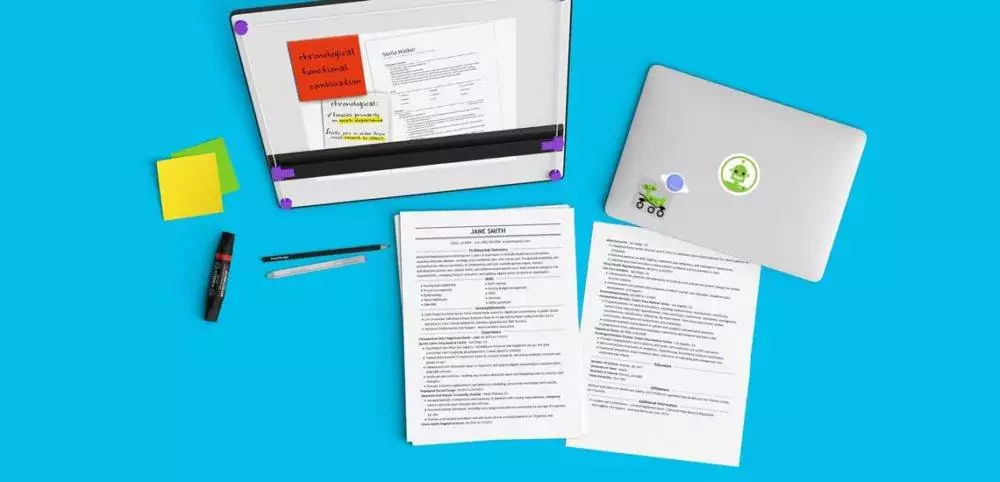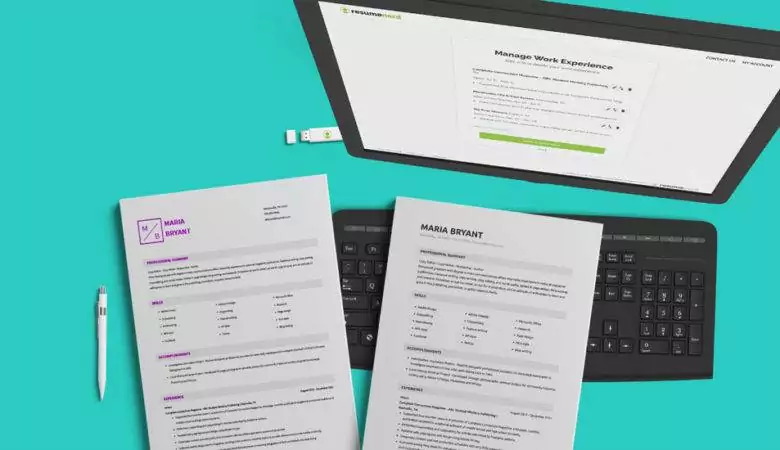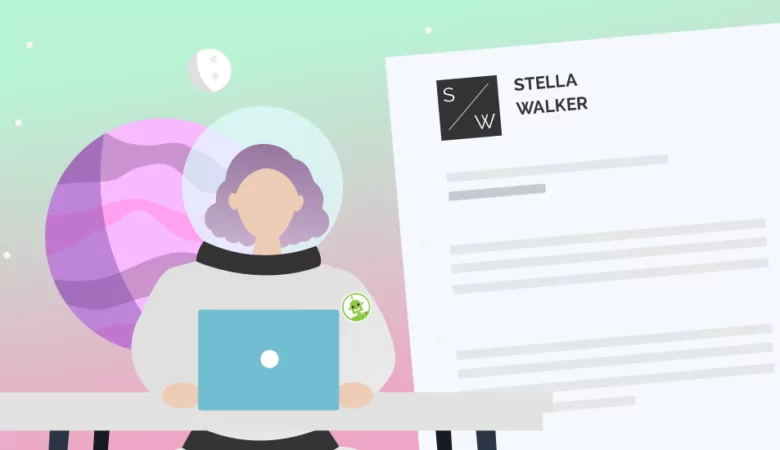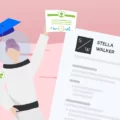What’s the best resume format for job applications? That depends on your level of experience and current career goals. Learn the difference between the three main resume types and when to use each one in this easy to follow guide!
Table of Contents
 Introduction
Introduction
You never get a second chance to make a first impression.
When it comes to job opportunities, your resume is making that first impression for you.
Using the correct resume format for your particular job search—and making sure it contains the right information—isn’t just a good idea. It’s vital for a successful job search.
Think of it this way: your resume is the one thing you know will make contact with a potential employer (or the gatekeepers). You need to learn how to organize and format it appropriately so that you can make a positive impact and get in the door.
This begs the question: what’s the best resume format for job applications? Well, that depends on your level of experience and current career goals. In this guide, you’ll learn about the three main resume types and when it’s most appropriate to use each one.
Ready to make a great first impression? It all starts with the right resume format.
 Resume Formats for Job Seekers
Resume Formats for Job Seekers
Nope: there’s not just one type of resume. Depending on your current career status and the job you’re applying for, you might choose one of three primary resume formats: chronological, functional, or combination.
Here’s a brief explanation of each type of resume.
Chronological Resume Format
This is the most common format for a resume. It focuses primarily on work experience, and lists jobs in order from most recent to oldest. The chronological format is also the best for getting your resume past an applicant tracking system (ATS).
Functional Resume Format
Less common than the chronological resume format, the functional resume format focuses first and foremost on relevant job skills. Work experience may be mentioned, but it will be listed below job skills.
Combination Resume Format
This resume format features aspects of both the chronological and functional resume formats. It places roughly equal importance on skills and work experience, though sometimes it will have a little bit more of one or the other.
What’s the Difference Between a Resume and a CV?
Many people mistakenly believe that a CV is a type of resume. Confused about the difference? Let’s take a moment to discuss.
While both are used as part of the job application process, a resume and CV (short for curriculum vitae) have two key differences: length and purpose. In short:
- A resume is generally based on competency. It’s more like a personal sales sheet, showcasing your skills, education, work experience, and achievements.
- A CV is mostly credential-based. It’s more likely to be used for fields like academia, science, and medical fields. A CV includes a comprehensive overview of education, papers written, research experience, and other highly specific and relevant information.
Because it’s more comprehensive in this way, a CV is often far longer than the average resume, which is only a page or two.
 The Chronological Format
The Chronological Format
The chronological resume format, also referred to as a reverse chronological resume format, is the most recognizable type of resume. Its key emphasis is on work experience, which is listed in reverse order from most recent to oldest.
When Should You Choose the Chronological Resume Format?
The chronological resume format is appropriate when you have straightforward and/or relevant work experience that qualifies you for the job for which you’re applying. If your job history has large gaps or jumps around different sectors, you may want to consider a different format.
Many employers consider this the most desirable type of resume format, because it is easy to read, simple to navigate, and gives them a good overview of who you are and what you’ve been doing in your career.
What’s Included in a Chronological Resume Format?
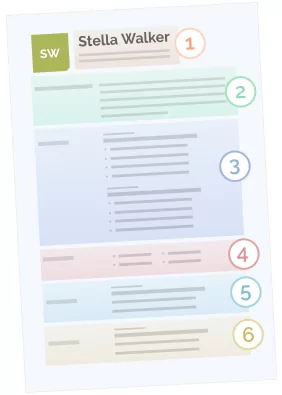
- Basic information:
Your name, professional title, and contact information. - Summary:
A resume summary statement about who you are and what you’re looking for in a position. - Work experience:
Each section will include the company name, your job title, and a brief summary of your responsibilities, including key roles, responsibilities, and achievements. - Skills:
This section highlights the relevant skills you’ve developed over the course of your career. Emphasize hard skills over soft skills. In many chronological resume templates, the skills section is just after the summary, above the work experience section. - Education:
List your schooling, including where you studied, the highest level of degree attained, and the dates you attended. Unless you didn’t attend college, listing your high school is not necessary. - Additional sections:
Additional sections on a chronological resume might include certifications, volunteer work, professional organizations, or awards you’ve won.
Tips for Writing a Chronological Resume
- Keep it brief.
Write a 1-2 sentence task-based summary of each position: what were the primary responsibilities? Then list a few bullet points of your most relevant highlights or achievements in the role. Repeat for each work experience. - Tailor your resume to the job at hand.

Emphasize work experience that is relevant to the position you’re applying for. Customize your task-based summary and bullet points to highlight the tasks or achievements that will translate well to your desired position. - Curate your content.
While your work experience might have started with a stint in pizza delivery at age 17, if you’re currently applying at a law firm and have 10 years of relevant experience, you can probably leave off the high school job.
Chronological Resume Format: Review
- The chronological resume format is a classic resume format that is considered an industry standard.
- This resume format is most appropriate when you have recent and relevant work experience that applies to the job at hand.
- The bulk of this resume format is dedicated to your work experience, which is listed in reverse chronological order.
- This format allows you to make mention of your education, relevant skills, and add in other sections that may be suited to the job at hand.
 The Functional Format
The Functional Format
The functional resume format, also sometimes called a skill-based resume format, focuses first and foremost on your job skills. The majority of the document is dedicated to skills you’ve developed that are relevant to the job you’re applying for, with little or no emphasis on work experience.
When Should You Choose the Functional Resume Format?
Since most employers want to see your most recent work experience, the functional resume format isn’t as popular as the chronological resume format.
However, this format can help when you have a large gap in your employment history, or if your work experience isn’t relevant to the desired position. By supplying a functional resume, you can prove that even without relevant work experience, you still have skills that make you a qualified candidate.
What’s Included in a Functional Resume Format?
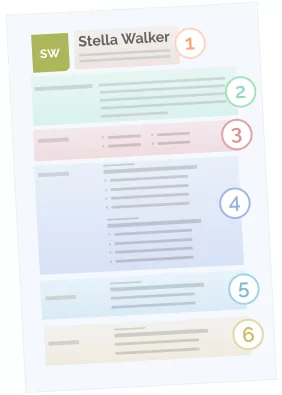
- Basic information:
Your name and professional title, as well as contact information. - Summary:
Briefly summarize who you are professionally, what you are looking for, and how you can add immediate value. - Skills:
This will be the biggest emphasis for this type of resume. Tailor your listed skills to the job at hand. For example, if you are applying for an IT position, emphasize your skills with data management, computer software, and infrastructure planning abilities. - Work experience:
You should still include a work experience section in a functional resume, unless you do not have work experience. Include the company’s name, your job title, and a summary of your duties and responsibilities. - Education:
Detail your education, including the school or schools you attended, your degrees, and the dates you attended. High school education is not necessary, unless you didn’t attend college. - Additional sections:
Some added sections you might consider adding to a functional resume include certifications, professional memberships, volunteer experience, or achievements/awards you’ve won.
Tips for Writing a Functional Resume
- Write a killer cover letter.
Since the functional resume format isn’t considered standard, be sure to explain yourself in your cover letter. This can be a great way to reduce potential concerns the employer may have over gaps in your employment history. - Carefully compose your summary.
The summary is key in this type of resume, allowing you to note your intentions and call out how your skills make you a powerful candidate for the job. - Organize skills by theme.
When you’re composing a functional resume, it can be helpful to list skills in categories. Identify your most relevant hard skills, then group them under headings such as “Project Management” or “Data Security.”
Functional Resume Format: Review
- If you wish to explain a career gap or shift, do so briefly in your cover letter: never on your resume.
- Be sure to list hard skills that are specific to the job you’re applying for rather than vague or general skills.
- Highlight your most relevant and impressive achievements to show that you are a worthwhile candidate.
 The Combination Resume Format
The Combination Resume Format
The combination resume format includes aspects of both chronological and functional resume formats. It puts emphasis on both work experience and skills. Typically, it starts with skills and then finishes with work experience.
When Should You Choose the Combination Resume Format?
The combination resume format is most appropriate when you have some work experience, but you believe that your skills deserve more emphasis than on a traditional chronological resume.
There might be a variety of reasons why you might want to emphasize skills over work experience. For instance, maybe you’re changing fields and a lot of your work experience is not relevant to the position you’re now considering.
In such circumstances, the combination resume format allows you to put emphasis on relevant skills while still showing a work history that proves you’ve been actively employed.
What’s Included in a Combination Resume Format?

In the combination resume format, you’ll want to be sure to include the following:
- Basic information:
Your name, professional title, and contact information. - Summary:
In a brief statement, sum up who you are and what type of employment you’re seeking, and what you can offer. - Skills:
This section will take up a substantial portion of the resume, highlighting skills that you’ve developed over time that will help you excel at work. - Work experience:
With the combination resume format, this section will be about equal in length to the skills section. There will be a separate entry for each past employer, including the company name, your job title, and a description of your responsibilities and key achievements in the position. - Education:
Here, you’ll list the schools you’ve attended. Be sure to include the name of the school, the highest level of degree you’ve attained, and the dates attended. You don’t have to list high school education unless you didn’t attend college. - Additional sections:
You can personalize this resume format with additional sections such as listing certifications, organizations you’re part of, volunteer experience, or other achievements.
Tips for Writing a Combination Resume
- Write a clear cover letter.
Since this resume format isn’t as common as the chronological format, note in your cover letter why you’re a good fit for the position. - List professional skills that are relevant to the job being offered.
Get specific with your skill listings: hardskills that the employer has specifically mentioned or requested in the job listing. This helps show that you’re capable of being professional at work and that you’re ready to do the job!
Combination Resume Format: Review
- The combination resume format features aspects of both the chronological and functional resume formats.
- With this resume format, you’ll put approximately equal emphasis on your skills and work experience.
- This may be an ideal resume format if you have some work experience, but want to prominently emphasize your skills.
 Resume Formats for First-Time Job Seekers
Resume Formats for First-Time Job Seekers
Crafting a resume while you’re still a student can prove tricky. On one hand, you’ve been preparing and gaining experience for the workforce through your schooling. On the other hand, since you’ve been in school, your experience in your desired field is likely limited. What to do?
What’s the Best Resume Format for Students?
Before settling on a resume format, take a moment to assess your work experience. As a student, do you have any work experience, internships, or volunteer positions that could be relevant to the job you’re applying for?
| ✓ Work Experience Example |
|---|
| ✓ Part-time and after-school jobs
✓ Internships and work-study programs ✓ Self-directed work (yard-care business, babysitting) ✓ Volunteer work directly related to the job |
| ✓ Volunteer Experience Example |
| ✓ Community involvement
✓ Volunteer activities for a religious organization ✓ Political or civic involvement ✓ Helping at a non-profit organization |
For instance, if you have held several internships and a part time job that is related to your desired field through school, you might consider the chronological format.
Alternatively, if you have little work experience but have developed valuable skills while in college, you might want to consider the functional format or a combination format.
By using a resume template to format your student resume, you can input all of your experience and skills and then tailor the document. This allows you to create the most robust and impressive resume possible.
Tips for Student Resumes
- If you’re still in school, list your degree as “in progress” or “expected graduation” with the school you’re attending, your expected date of graduation, the type of degree you’re pursuing, and your major.
- Even if your work experience isn’t directly related to your desired field, it can still tell potential employers about your strengths. For instance, a job in sales could give you experience that could be helpful in a variety of different fields.
- Don’t be shy about listing any awards, honors, scholarships, or certifications you have received.
 Resume Formats for Professionals
Resume Formats for Professionals
If you’re a professional with some experience under your belt, your resume should provide a reflection of your experience and achievements.
What’s the Best Resume Format for Professionals?
In many cases, the right choice for professionals will be the chronological resume format. At this point in your career, you want to let potential employers know that you have relevant work experience.
However, this isn’t always the case. There are times when the functional or combination resume format are better suited to professionals.
For example, if you’re extremely experienced but are looking to change fields, you may want to emphasize your skills more than the specific jobs that you’ve held in the past, so it might be more appropriate in some times to use either a functional or combination resume format.
Tips for Professional Resumes
- If you have a lot of experience in the field, the chronological resume format is the best way to convey your level of expertise to potential employers.
- Tailor the wording in your resume to echo the job description you’re applying for. Using specific wording or language that is in line with the job listing can help get you noticed.
- Don’t forget to call out your achievements. Your most impressive achievements and projects should be listed in bullet points, after the task-based summary for each work experience.
- If you have extensive career history, you may not need to list all your work experience. To show achievements from unlisted, early work roles, add a “Career Highlights” section above the work experience section.
 The Final Word on Resume Formats for Job Seekers
The Final Word on Resume Formats for Job Seekers
Resumes are like snowflakes: no two are exactly alike. To make sure that your resume is the perfect reflection of who you are and who you want to become professionally, it’s important to choose the right resume format. Then make sure you include the most relevant information and format it correctly.
The more attention you put on getting your resume just right, the sooner that success will be yours.
